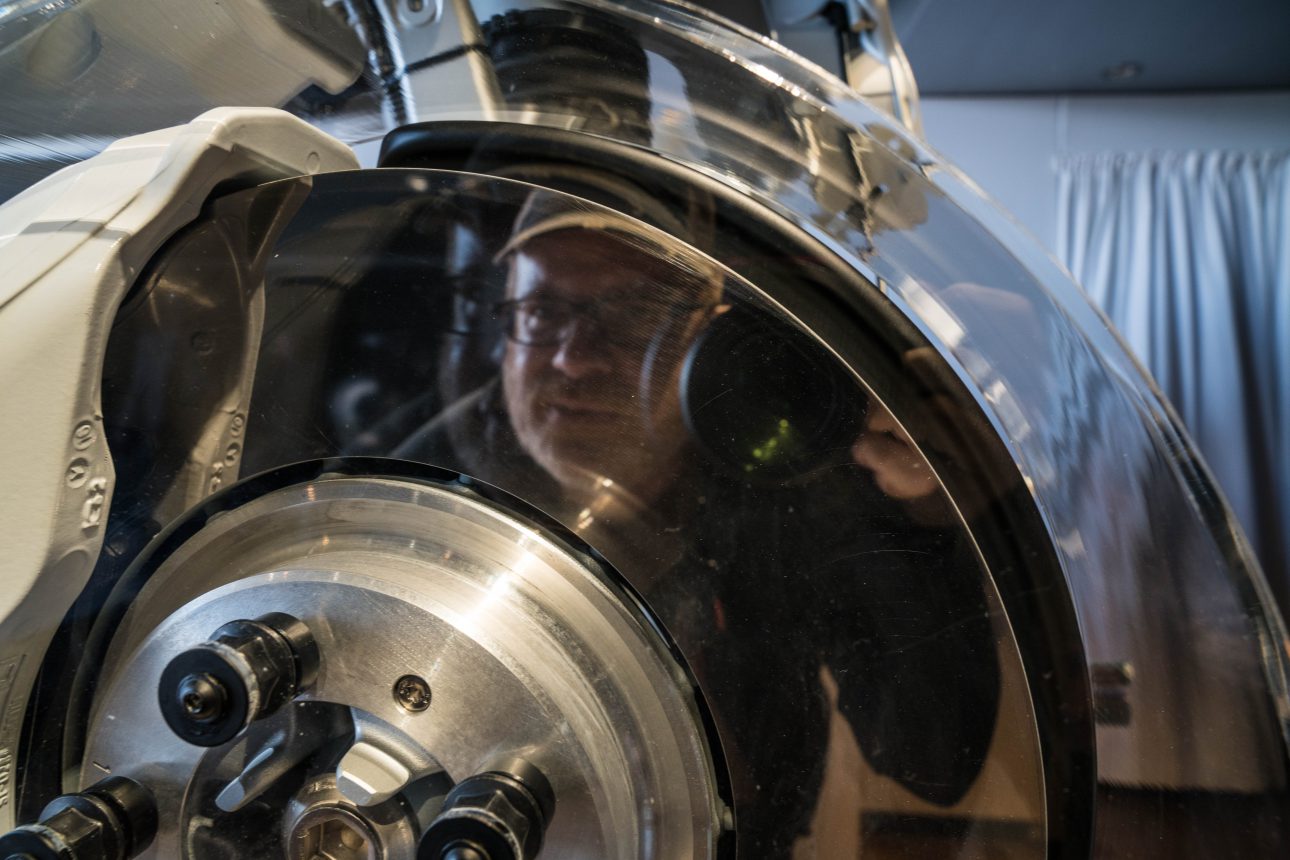

You can brush your teeth and comb your hair by the strange new brake discs on the freshly redesigned 2019 Porsche Cayenne. The optional upgrade, dubbed the Porsche Surface Coated Brake (PSCB), acquires over time a smooth and highly reflective patina as the pads polish the rotor’s tungsten-carbide coating. The result is a liquid-mirror-like finish that’s as hard to describe as it is to resist. You can’t stop staring. “Brake, brake, on my Porsche, who’s the fastest on this course?” you find yourself whispering, in a trance.
It looks, frankly, like it’s fake—something ginned up for a concept vehicle and trotted out at a car show. But it’s a legit brake. A good one, too. We’re currently whipping up a full review of the new Cayenne that will post shortly, and we’re obligated to hold back our proper driving impressions until then. But we wanted to slip in a sneak peek at one of the key technological innovations in the new machine, simply because it’s pretty far out.
Porsche engineers say they developed the PSCB system with Bosch to plug a gap between conventional cast-iron brakes and the pricey, track-ready ceramic options—the PCCB’s—that prioritize low weight over low cost. While those run about $10,000 for a full set, the PSCB’s are a relatively modest $3,490 upgrade. (The Cayenne Turbo, on which the PSCBs will be standard, uses 415mm x 40mm rotors up front and 365 x 28’s in the rear.) What you get as a result is as significant in its own way as the featherweight ceramics are in theirs: up to 30 percent longer service life; increased friction for better responsiveness and less fade; and a tenfold decrease in brake dust accumulating on your gorgeous wheels.
To achieve this, Porsche begins with an iron core, onto which it applies a hard tungsten carbide layer just 0.1 millimeters thick, generated through a high-speed thermal application process. The surface layer is treated to maintain its friction levels for the lifespan of the rotor; a conventional iron disc would use 90 percent more material to achieve the same longevity of the super-hard tungsten rotor, hence the extra dust, since most of that is generated from the discs, not the pads.
Speaking of pads, Porsche developed a special recipe to work well with the new rotors. (Porsche is keeping their precise composition a state secret, at least for now.) Once the whole setup—complete with massive, white 10-piston front calipers and four-piston rears—starts rolling, the pads wear away a top layer of manufacturing residue within about 400 miles, leaving the mirrored finish that is the disk’s natural state. By the time the rotors are properly worn down, the mirrored finish will still be pretty fab.
This means, of course, that you can bet on a new trend of mounting discarded PSCB’s on your wall instead of slinging them into the dumpster—and expect entrepreneurial eBay types to scoop them up and turn them into clocks and coffee tables. Of course, this could also be the first of a new trend of copycat rotors from every performance-car manufacturer. After all, fashion statements like this will make your track buddies jealous faster than you can say “brake bling.”